
Cape Greco: Cyprus' Pristine Coastal Gem
Discover Cape Greco in Cyprus: A breathtaking blend of natural beauty, adventure, and historical charm on the southeastern coast.
Nestled on the southeastern coast of Cyprus, Cape Greco stands as a beacon of natural beauty and tranquility. This stunning cape offers a blend of crystal-clear waters, majestic cliffs, and serene landscapes. Whether you're an adventure seeker, a nature lover, or simply looking to unwind, Cape Greco has something for everyone. The Cape Greco National Forest Park is a haven for hikers and explorers. The trails here lead you through lush greenery and offer panoramic views of the Mediterranean Sea. Don't miss the Aphrodite Nature Trail, which is steeped in myth and legend. The park is also a hotspot for birdwatching, with many migratory species making a stop here. For those who love the water, the Blue Lagoon is a must-visit. The turquoise waters are perfect for swimming, snorkeling, and diving. The underwater caves and rock formations add an element of mystery and excitement to your aquatic adventures. Boat tours are also available for a more relaxed way to explore the coastline. Cape Greco is more than just a natural wonder; it's also a cultural and historical treasure. The small, whitewashed church of Agioi Anargyroi is perched on the cliffs and offers a peaceful retreat with stunning sea views. Nearby, the Sea Caves are a marvel of natural architecture, carved by the relentless waves over centuries.
Local tips in Cape Greco
- Visit early in the morning to avoid crowds and enjoy the serene atmosphere.
- Wear comfortable hiking shoes for the trails; some paths can be rocky.
- Bring snorkeling gear to explore the Blue Lagoon and underwater caves.
- Carry plenty of water and sun protection; the Cypriot sun can be intense.
- Check local boat tour schedules for the best times to visit the Sea Caves.
Cape Greco: Cyprus' Pristine Coastal Gem
Nestled on the southeastern coast of Cyprus, Cape Greco stands as a beacon of natural beauty and tranquility. This stunning cape offers a blend of crystal-clear waters, majestic cliffs, and serene landscapes. Whether you're an adventure seeker, a nature lover, or simply looking to unwind, Cape Greco has something for everyone. The Cape Greco National Forest Park is a haven for hikers and explorers. The trails here lead you through lush greenery and offer panoramic views of the Mediterranean Sea. Don't miss the Aphrodite Nature Trail, which is steeped in myth and legend. The park is also a hotspot for birdwatching, with many migratory species making a stop here. For those who love the water, the Blue Lagoon is a must-visit. The turquoise waters are perfect for swimming, snorkeling, and diving. The underwater caves and rock formations add an element of mystery and excitement to your aquatic adventures. Boat tours are also available for a more relaxed way to explore the coastline. Cape Greco is more than just a natural wonder; it's also a cultural and historical treasure. The small, whitewashed church of Agioi Anargyroi is perched on the cliffs and offers a peaceful retreat with stunning sea views. Nearby, the Sea Caves are a marvel of natural architecture, carved by the relentless waves over centuries.
When is the best time to go to Cape Greco?
Iconic landmarks you can’t miss
Cavo Greco National Park
Experience the breathtaking beauty and diverse wildlife of Cavo Greco National Park, a must-visit natural gem in Ayia Napa, Cyprus.
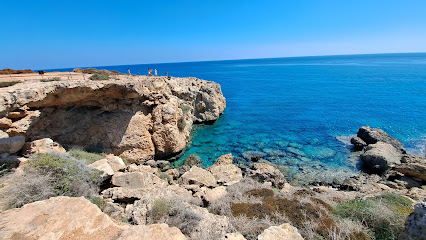
Cape Cavo Greco
Explore the stunning natural beauty and rich biodiversity of Cape Cavo Greco, a nature preserve in Cyprus, perfect for adventure and relaxation.
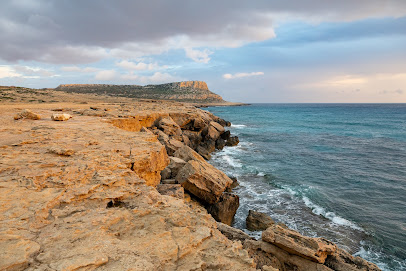
Cyclops Cave
Experience the majestic Cyclops Cave at Capo Greco, a stunning natural wonder in Cyprus featuring breathtaking views and unique geological formations.
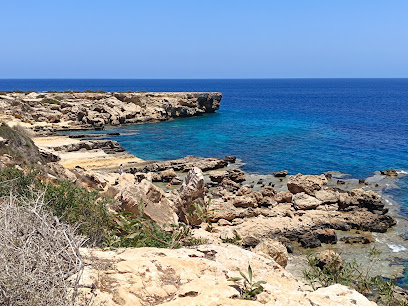
Monument of Peace
Discover the Monument of Peace in Ayia Napa, Cyprus - a stunning tribute to unity, surrounded by breathtaking Mediterranean views.
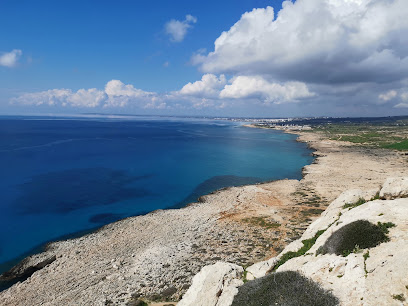
The Lighthouse in Cape Greco
Discover the Lighthouse in Cape Greco, a historical gem offering stunning views, rich maritime history, and a natural paradise in Cyprus.
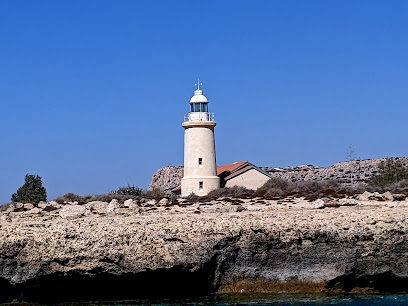
Cavo Greco viewpoint Ayia Napa
Discover the stunning vistas and natural beauty of Cavo Greco viewpoint in Ayia Napa, a must-see destination for nature lovers and photographers.
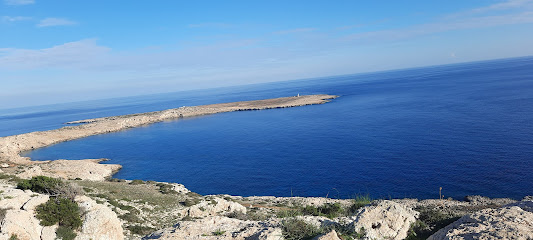
Kap Greco View Point
Discover stunning views of the Mediterranean Sea at Kap Greco View Point, an essential stop for tourists exploring the beauty of Ayia Napa, Cyprus.
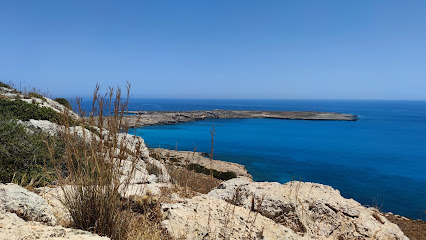
Cape Greco Bench
Experience breathtaking views and serene beauty at Cape Greco Bench, a stunning tourist attraction on Cyprus's southeastern coast.
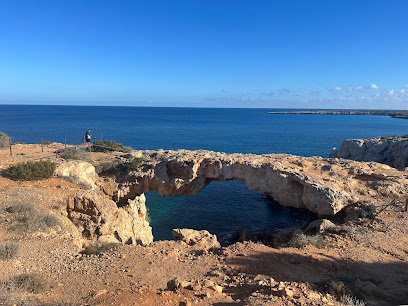
Caves cavo greco
Explore the stunning sea caves and breathtaking landscapes of Cavo Greco, a must-visit attraction near Ayia Napa, Cyprus.
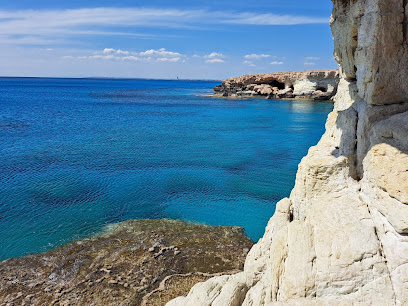
The best view of Cape Greco
Experience the stunning beauty and breathtaking views of Cape Greco, a premier hiking area in Ayia Napa, Cyprus, perfect for nature lovers and adventurers.
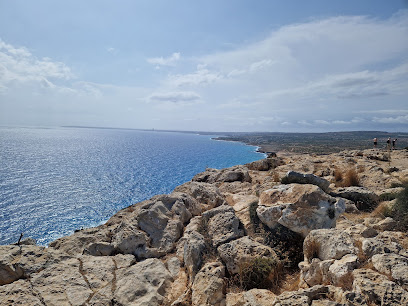
Kavo's View Point
Discover the stunning vistas of Kavo's View Point in Ayia Napa, Cyprus, where breathtaking views of the Mediterranean Sea await every visitor.
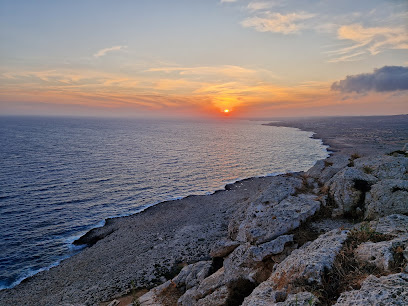
Cape Greko Peninsula
Explore Cape Greko Peninsula, a stunning hiking area in Cyprus offering breathtaking views, unique geological formations, and crystal-clear waters.
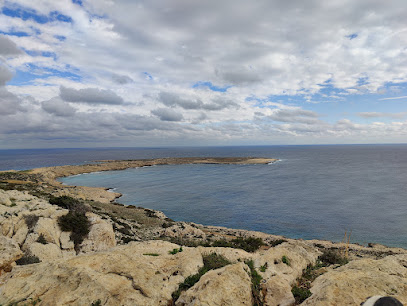
Cape Greco Gazebo
Discover the breathtaking beauty and rich history of Cape Greco Gazebo, a must-visit landmark in Ayia Napa, Cyprus.
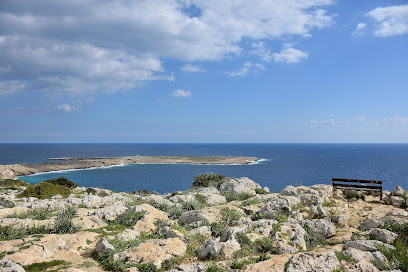
Cavo Greco Marine Protected Area
Explore the breathtaking beauty of Cavo Greco Marine Protected Area in Protaras, Cyprus, home to stunning beaches, vibrant marine life, and scenic hiking trails.
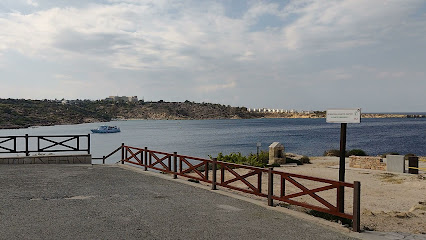
Cape Greco Climbing Crag
Experience the thrill of rock climbing at Cape Greco Climbing Crag, where adventure meets stunning views in Ayia Napa, Cyprus.
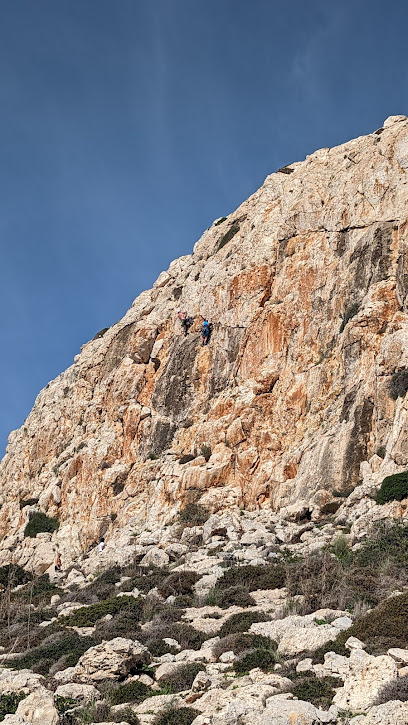
Unmissable attractions to see
Emmeleia sea cave
Explore Emmeleia Sea Cave in Ayia Napa, Cyprus, where stunning natural beauty meets adventure in a serene coastal setting.

Cyprus Taste Tours - Ayia Napa
Experience the authentic taste of Cyprus with guided culinary tours, traditional dining, and exquisite wine tastings in Ayia Napa.

Blue lagoon crystal waters swimming area
Experience the breathtaking Blue Lagoon in Ayia Napa, where crystal-clear waters meet stunning landscapes for an unforgettable beach getaway.

Cliff Jumping and Deep water Solo
Discover the ultimate adventure with cliff jumping and deep water soloing at Agioi Anargiroi Dive Site, Cyprus – a must-visit for thrill seekers.

Essential places to dine
Ocean Basket Agia Napa
Experience the best of Mediterranean cuisine at Ocean Basket Agia Napa, where fresh seafood meets vibrant atmosphere.
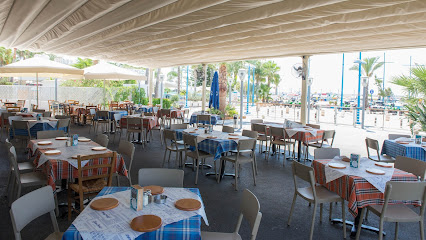
En Yevo Tavernaki
Experience authentic Greek cuisine at En Yevo Tavernaki in Ayia Napa, where every meal is a celebration of flavor and tradition.
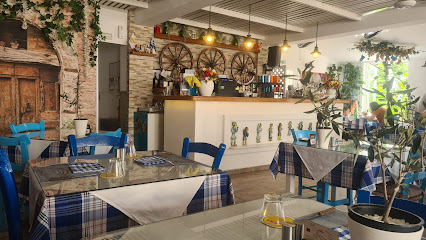
Sesoula Kalamaki
Discover authentic Greek flavors at Sesoula Kalamaki in Ayia Napa – a must-visit destination for food enthusiasts.
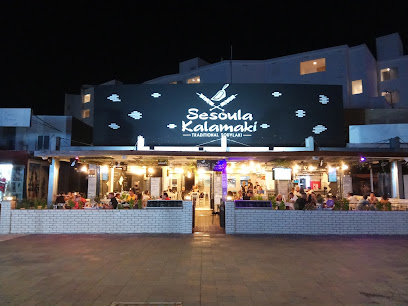
AVRA authentic cypriot kitchen
Savor authentic Greek flavors at AVRA Authentic Cypriot Kitchen in Ayia Napa—where delicious food meets vibrant live music.
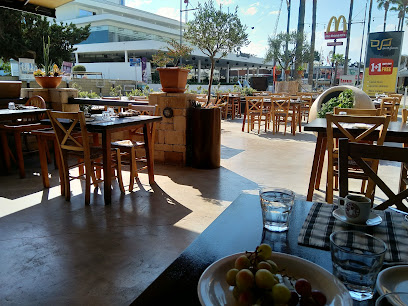
Quadro Restaurant
Experience the best of Italian cuisine at Quadro Restaurant in Ayia Napa - where every dish tells a delicious story.
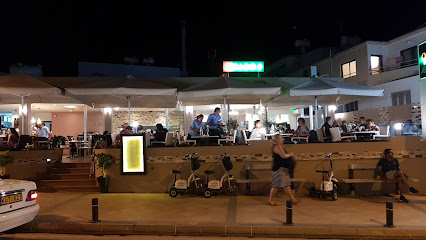
Davinci Napiana Italian Cuisine
Savor authentic Italian flavors at Davinci Napiana in Ayia Napa – where every dish tells a story.
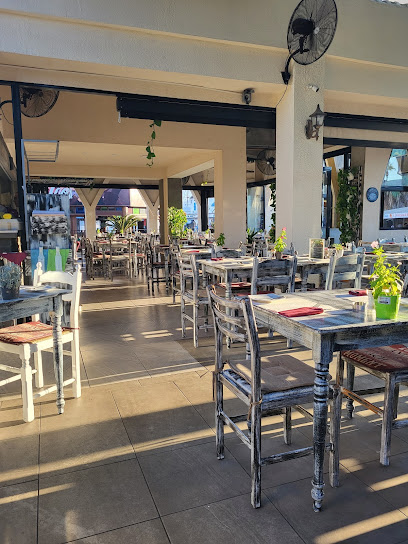
Louis' Sandwich Bar
Experience the best sandwiches in Protaras at Louis' Sandwich Bar – where quality meets affordability in every bite.
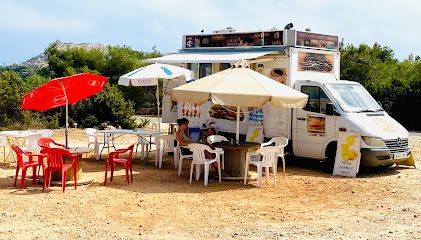
Bella Italy Cy
Experience authentic Italian cuisine at Bella Italy Cy in Ayia Napa – where every dish tells a story of flavor and tradition.
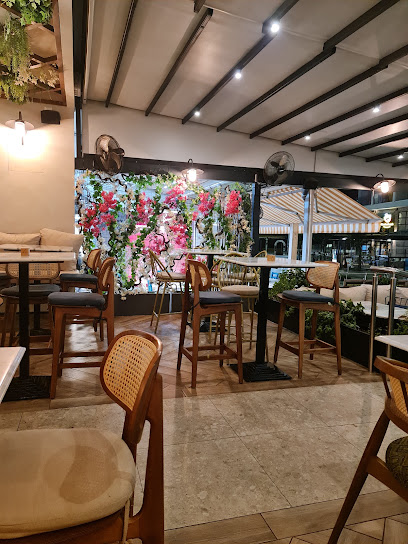
Spartiatis Restaurant
Experience authentic Cypriot cuisine at Spartiatis Restaurant with breathtaking views of Cape Greco in Protaras.
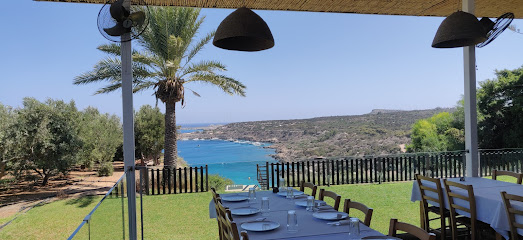
Nameless Restaurant
Savor authentic Greek cuisine at Nameless Restaurant in Protaras – where every dish tells a story.
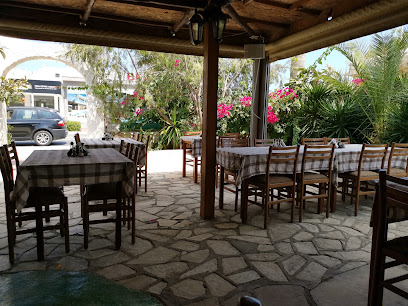
Kafkaros Tavern
Discover the authentic taste of Cyprus at Kafkaros Tavern in Protaras - where tradition meets flavor in every dish.
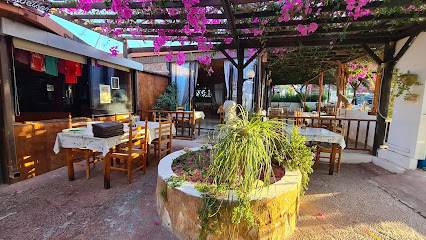
Poseidonio Tavern - Restaurant
Experience authentic Mediterranean flavors at Poseidonio Tavern in Paralimni, Cyprus – a must-visit for food lovers!
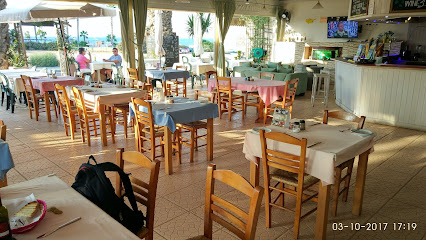
Folio Restaurant
Experience culinary bliss at Folio Restaurant in Paralimni, where exquisite steaks meet fresh sushi in a delightful atmosphere.
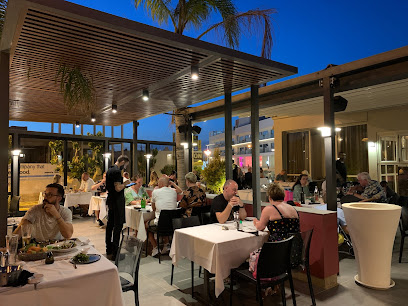
Sale e Pepe
Experience authentic Italian cuisine at Sale e Pepe in Ayia Napa - where flavors come alive in a charming setting.
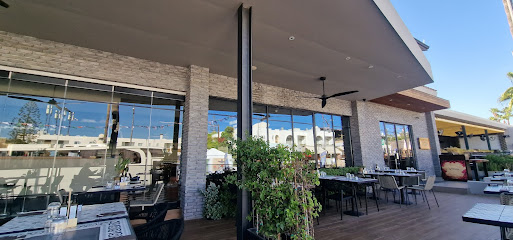
Roof Burger Bar
Discover Roof Burger Bar: A premier dining destination in Ayia Napa featuring gourmet burgers and stunning rooftop views.
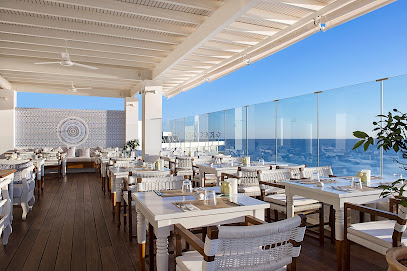
Markets, malls and hidden boutiques
Cavo Greco National Park
Explore the breathtaking landscapes and diverse ecosystems of Cavo Greco National Park, a stunning natural wonder on Cyprus' southeastern coast.
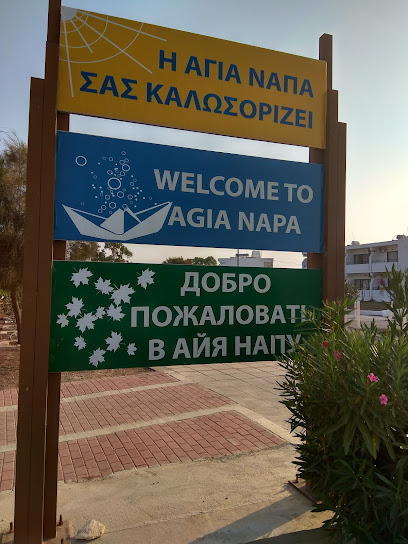
Poseidon Dive Centre, Protaras, Cyprus
Explore the underwater wonders of Protaras at Poseidon Dive Centre – your gateway to unforgettable diving adventures in Cyprus.
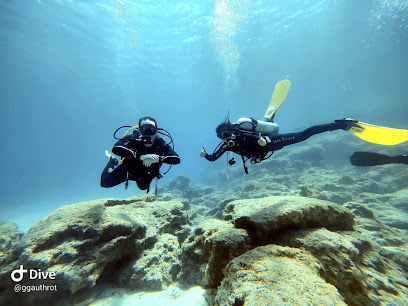
Grecos Bakery.Coffee
Discover the flavors of Cyprus at Grecos Bakery, where fresh pastries and aromatic coffee create the perfect culinary experience in Protaras.
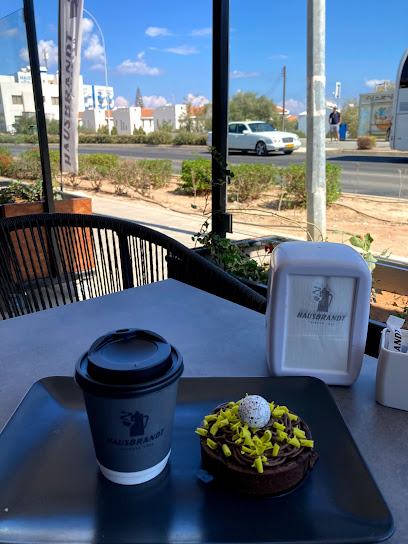
Best Buy Supermarket
Explore the best of local and international groceries at Best Buy Supermarket in Protaras, Cyprus, your one-stop shop for all essentials.
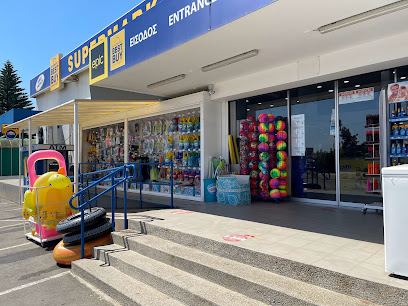
The Lighthouse in Cape Greco
Explore the iconic Lighthouse in Cape Greco, a stunning blend of history and breathtaking coastal views in Cyprus.
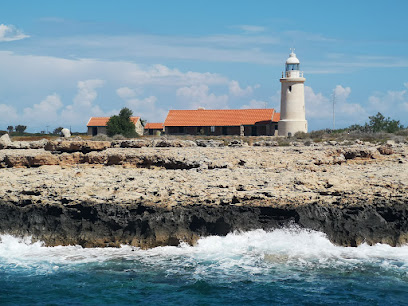
Sirens Dive Centre
Explore the crystal-clear waters of Cyprus at Sirens Dive Centre, where adventure and marine beauty await every diver.
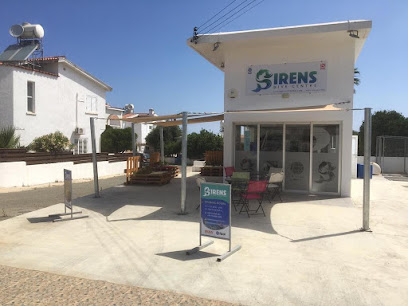
Cavo Greco viewpoint Ayia Napa
Experience the stunning vistas of Cavo Greco viewpoint in Ayia Napa, a must-see natural wonder in Cyprus with breathtaking views of the Mediterranean.
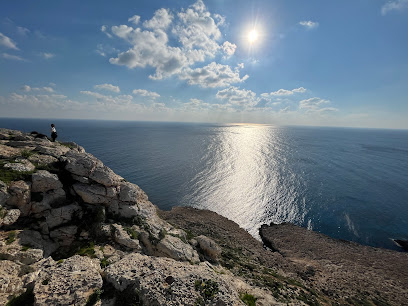
Kap Greco View Point
Discover breathtaking panoramic views of the Mediterranean at Kap Greco View Point in Ayia Napa, Cyprus, a must-visit for nature lovers and photographers.
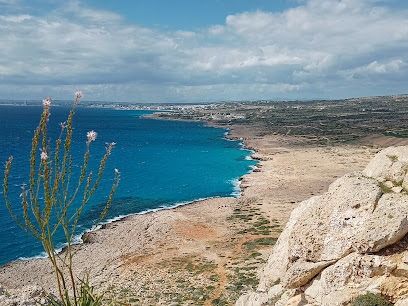
Aphrodite Gift Shop
Discover unique Cypriot souvenirs and crafts at Aphrodite Gift Shop in Ayia Napa - a must-visit for every traveler seeking authentic gifts.
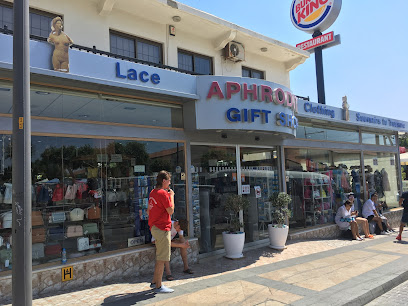
Caves cavo greco
Discover the breathtaking beauty of Cavo Greco, a stunning coastal paradise in Cyprus, famous for its enchanting sea caves and vibrant marine life.
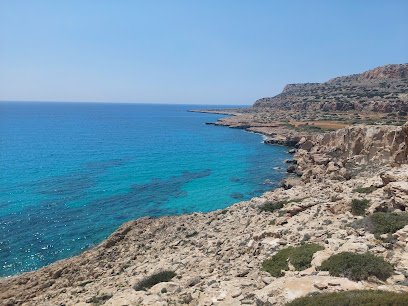
The best view of Cape Greco
Discover the stunning beauty of Cape Greco, a hiker's paradise with breathtaking views of the Mediterranean coastline and serene landscapes.
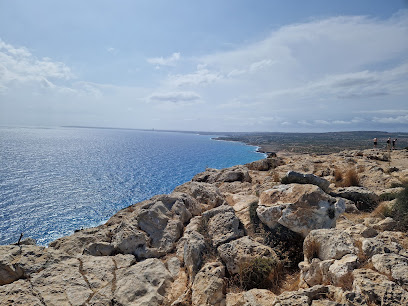
Mesana Supermarket
Experience the vibrant selection at Mesana Supermarket, your go-to hypermarket in Protaras for groceries, gifts, and local treasures.
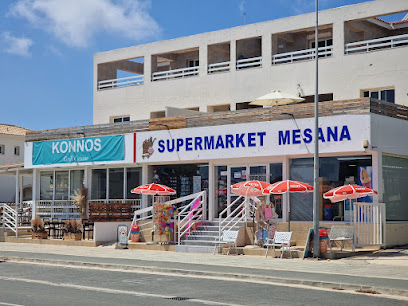
Kavo's View Point
Discover the stunning beauty of Kavo's View Point in Ayia Napa, where breathtaking views of the sea and lighthouse await you.
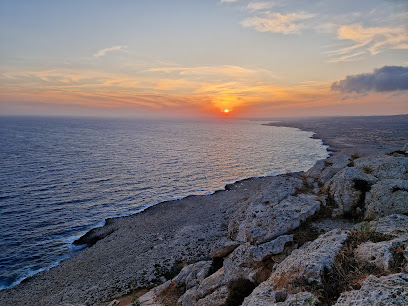
Nico.La market
Discover local flavors and essentials at Nico.La Market, the ultimate supermarket experience in Protaras, Cyprus.
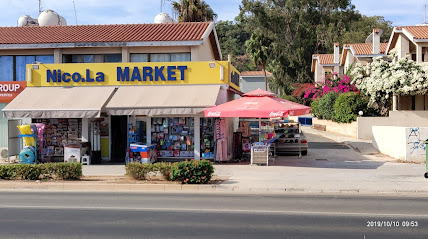
The Bay - Bites & Brew
Experience the charm of The Bay - Bites & Brew, a coastal coffee shop in Protaras offering delightful brews and breathtaking views.
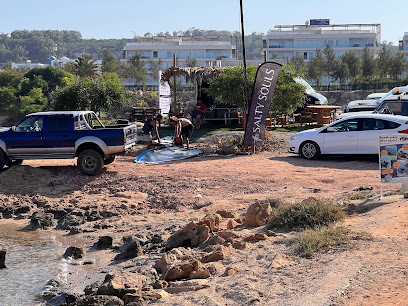
Essential bars & hidden hideouts
The Square Bar
Experience the vibrant nightlife at The Square Bar in Ayia Napa, where lively music, refreshing drinks, and unforgettable moments await every visitor.
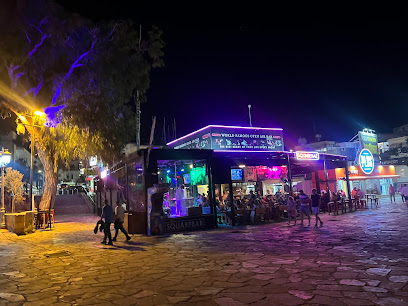
Love Boat Bar
Experience vibrant nightlife and refreshing drinks at Love Boat Bar in Protaras, Cyprus, a hub for relaxation and fun.
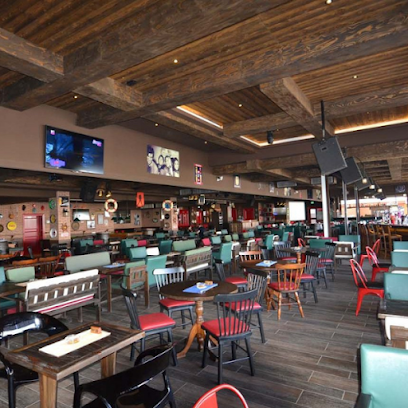
Fools And Horses Pub
Experience the warm ambiance and delicious offerings of Fools And Horses Pub, a must-visit location in Protaras, Cyprus for every traveler.
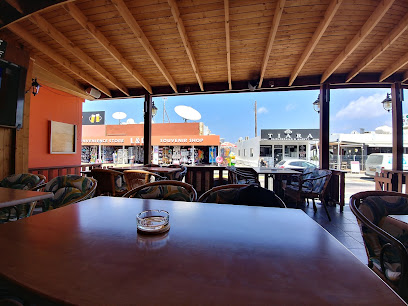
Ghetto Cocktail Bar
Experience the vibrant nightlife at Ghetto Cocktail Bar in Protaras, where creative cocktails meet delicious hamburgers in a lively atmosphere.

Waves Cocktail Bar
Experience the vibrant nightlife of Protaras at Waves Cocktail Bar, where stunning views and exquisite cocktails await every visitor.

Ripples
Discover the vibrant flavors of Cyprus at Ripples, a grill haven blending local ingredients and stunning coastal views.

Blue Lagoon Snack-Bar
Discover the idyllic Blue Lagoon Snack-Bar in Protaras, where refreshing drinks and breathtaking views create the perfect getaway in Cyprus.
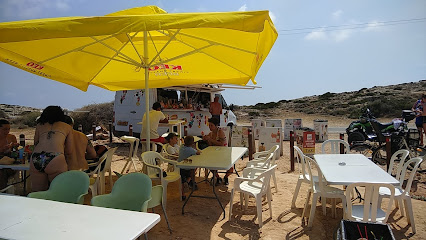
Nalu Cocktail Bar
Discover the vibrant nightlife of Protaras at Nalu Cocktail Bar, where expertly crafted cocktails and lively vibes create unforgettable evenings.
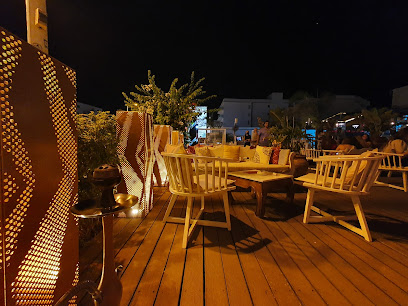
Rives Entertainment Bar
Experience the vibrant atmosphere of Rives Entertainment Bar in Protaras, where cocktails, live music, and fun await every visitor.
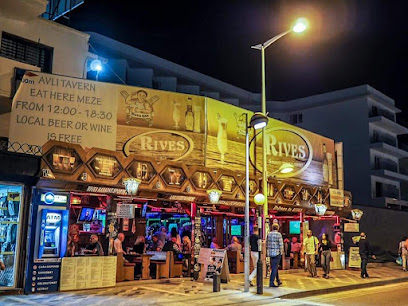
La-pas Cocktailbar
Experience the vibrant nightlife of Protaras at La-pas Cocktailbar, where expertly crafted cocktails and a lively atmosphere await you.
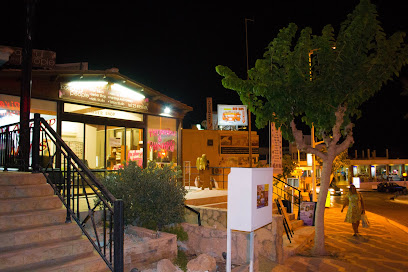
Teejay's Pub
Discover the lively Teejay's Pub in Protaras, Cyprus, where friendly vibes, great drinks, and local culture come together for an unforgettable night out.
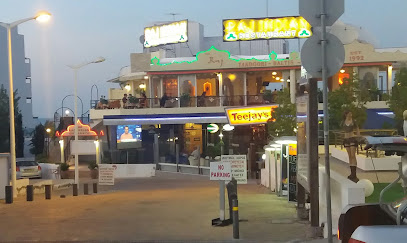
Cliff Bar
Cliff Bar in Ayia Napa offers a perfect blend of stunning views, vibrant nightlife, and a diverse drink menu for an unforgettable experience.
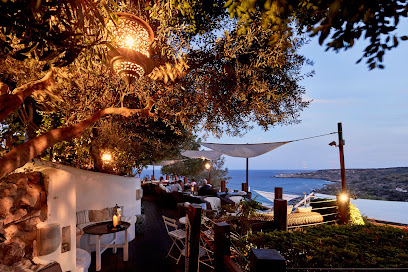
Bell's Cocktail Bar
Experience the lively nightlife at Bell's Cocktail Bar in Protara, offering exquisite cocktails and a vibrant atmosphere for an unforgettable evening.
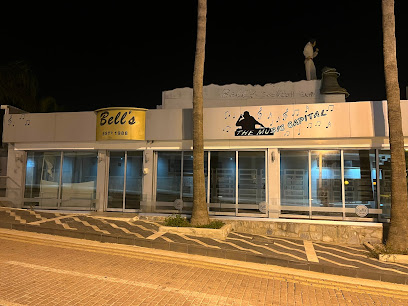
Q Cocktail Bar, Protaras
Experience Protaras nightlife at Q Cocktail Bar with expertly crafted cocktails and a vibrant atmosphere that captures the essence of Cyprus.
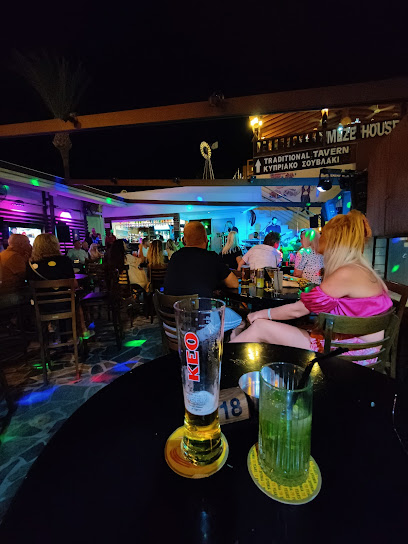
Only Friends Pub
Discover the vibrant atmosphere of Only Friends Pub in Protaras, where friendly service meets delicious pub fare and lively entertainment.
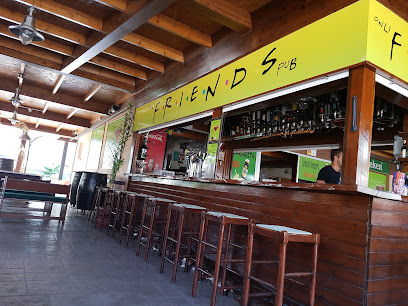
Local Phrases about Cape Greco
-
- HelloΓειά σας
[Yia sas] - GoodbyeΑντίο
[Adio] - YesΝαι
[Ne] - NoΌχι
[Ohi] - Please/You're welcomeΠαρακαλώ
[Parakalo] - Thank youΕυχαριστώ
[Efharisto] - Excuse me/SorryΣυγνώμη
[Signomi] - How are you?Πώς είστε;
[Pos iste?] - Fine. And you?Καλά. Εσείς;
[Kala. Esis?] - Do you speak English?Μιλάτε αγγλικά;
[Milate anglika?] - I don't understandΔεν καταλαβαίνω
[Den katalaveno]
- HelloΓειά σας
-
- I'd like to see the menu, pleaseΘα ήθελα να δω το μενού, παρακαλώ
[Tha ithela na do to menu, parakalo] - I don't eat meatΔεν τρώω κρέας
[Den trao kreas] - Cheers!Υγεία!
[Ygeia!] - I would like to pay, pleaseΘα ήθελα να πληρώσω, παρακαλώ
[Tha ithela na plirosο, parakalo]
- I'd like to see the menu, pleaseΘα ήθελα να δω το μενού, παρακαλώ
-
- Help!Βοήθεια!
[Voithia!] - Go away!Πήγαινε μακριά!
[Pigaine makria!] - Call the Police!Καλέστε την Αστυνομία!
[Kaleste tin Astinomia!] - Call a doctor!Καλέστε ένα γιατρό!
[Kaleste ena giatro!] - I'm lostΈχω χαθεί
[Eho hathi] - I'm illΕίμαι άρρωστος
[Eimai arrostos]
- Help!Βοήθεια!
-
- I'd like to buy...Θα ήθελα να αγοράσω...
[Tha ithela na agorasο...] - I'm just lookingΑπλά κοιτάω
[Apla kitao] - How much is it?Πόσο κοστίζει;
[Poso kostizi?] - That's too expensiveΑυτό είναι πολύ ακριβό
[Afto ine poli akribo] - Can you lower the price?Μπορείτε να μειώσετε την τιμή;
[Boreite na miοsete tin timi?]
- I'd like to buy...Θα ήθελα να αγοράσω...
-
- What time is it?Τι ώρα είναι;
[Ti ora ine?] - It's one o'clockΕίναι μία η ώρα
[Ine mia i ora] - Half past (10)Μισή (10)
[Misi (10)] - MorningΠρωί
[Proi] - AfternoonΑπόγευμα
[Apoyevma] - EveningΒράδυ
[Vradi] - YesterdayΧθες
[Hthes] - TodayΣήμερα
[Simera] - TomorrowΑύριο
[Avrio] - 1Ένα
[Ena] - 2Δύο
[Dio] - 3Τρία
[Tria] - 4Τέσσερα
[Tessera] - 5Πέντε
[Pente] - 6Έξι
[Exi] - 7Επτά
[Epta] - 8Οκτώ
[Okto] - 9Εννέα
[Ennea] - 10Δέκα
[Deka]
- What time is it?Τι ώρα είναι;
-
- Where's a/the...?Πού είναι ένα/το...;
[Pou ine ena/to...?] - What's the address?Ποια είναι η διεύθυνση;
[Poia ine i diefthinsi?] - Can you show me (on the map)?Μπορείτε να μου δείξετε (στο χάρτη);
[Boreite na mou deksete (sto charti)?] - When's the next (bus)?Πότε είναι το επόμενο (λεωφορείο);
[Pote ine to epomeno (leoforeio)?] - A ticket (to ....)Ένα εισιτήριο (για...)
[Ena isitirio (gia...)]
- Where's a/the...?Πού είναι ένα/το...;
History of Cape Greco
-
Cape Greco, also known as Cavo Greco, has been a landmark for sailors since ancient times. Located at the southeastern tip of Cyprus, it served as a crucial navigational point for merchant ships traveling between the Aegean and the Levant. The cape's strategic location made it a vital reference point in ancient maritime charts.
-
According to local legend, Cape Greco is home to the 'Ayia Napa Sea Monster,' a mythical sea creature that has been part of Cypriot folklore for centuries. The cape's dramatic cliffs and hidden sea caves have inspired numerous tales of mysterious sightings and mythical adventures, adding an air of mystique to the region.
-
During the Venetian rule of Cyprus (1489-1571), Cape Greco was fortified with watchtowers to protect against Ottoman incursions. These towers were part of a broader network of coastal defenses designed to monitor and safeguard the island's shores. Although many of these structures have not survived, their historical significance remains a testament to the strategic importance of the cape.
-
Under Ottoman rule (1571-1878), Cape Greco and its surrounding waters became notorious for pirate activity. The remote and rugged coastline provided an ideal hideout for pirates who targeted merchant vessels. The Ottoman authorities made several attempts to curb piracy, but the region's challenging terrain often rendered these efforts ineffective.
-
When Cyprus became a British colony in 1878, Cape Greco saw significant changes. The British established a network of lighthouses along the coast, including at Cape Greco, to improve maritime safety. This period also saw the introduction of modern infrastructure, which facilitated greater accessibility to the cape and its natural beauty.
-
In the late 20th century, Cape Greco was designated as a national park, highlighting its ecological and cultural importance. The cape's unique biodiversity, including rare plant species and migratory birds, alongside its historical landmarks, have made it a protected area. The national park status ensures conservation efforts and promotes sustainable tourism.
-
Today, Cape Greco is a popular destination for both tourists and locals. Its stunning landscapes, crystal-clear waters, and historical sites attract visitors year-round. The cape is also a center for various outdoor activities such as hiking, diving, and bird watching, making it a vibrant part of Cyprus's cultural and natural heritage.
Cape Greco Essentials
-
Cape Greco is located on the southeastern coast of Cyprus, near the town of Ayia Napa. The nearest international airport is Larnaca International Airport, approximately 45 kilometers away. From Larnaca, you can take a taxi, rent a car, or use a shuttle service to reach Cape Greco. The journey typically takes around 40 minutes by road. Public buses also connect Larnaca to Ayia Napa, from where you can take a local taxi or bus to Cape Greco.
-
Once in Cape Greco, getting around is relatively straightforward. Renting a car or scooter provides the most flexibility for exploring the area. Local taxis are available, but it is advisable to agree on the fare before starting your journey. Public buses run between Ayia Napa and Cape Greco, and they are an affordable option for short trips. For those who enjoy cycling, bike rentals are available in Ayia Napa, and there are scenic bike routes leading to and around Cape Greco.
-
The official currency in Cyprus is the Euro (EUR). Credit and debit cards are widely accepted in hotels, restaurants, and shops around Cape Greco. However, it is a good idea to carry some cash for small purchases or in case you visit less commercialized areas. ATMs are available in Ayia Napa and Protaras, but it is wise to withdraw sufficient cash before heading to more remote areas.
-
Cape Greco is generally a safe destination for tourists. However, it is always prudent to take standard precautions. Avoid leaving valuables unattended on the beach or in your car. While violent crime is rare, petty theft such as pickpocketing can occur in crowded tourist areas. There are no specific high-crime areas targeting tourists, but staying vigilant and aware of your surroundings is always recommended.
-
In case of emergency, dial 112 for immediate assistance. The nearest hospital is in Paralimni, approximately 10 kilometers from Cape Greco. There are also medical clinics and pharmacies in Ayia Napa and Protaras. It is recommended to have travel insurance that covers medical emergencies. For minor health issues, you can visit local pharmacies where pharmacists can provide over-the-counter medications.
-
Fashion: Do wear comfortable and breathable clothing suitable for the warm climate. When visiting religious sites, dress modestly and cover your shoulders and knees. Religion: Do respect local customs and traditions. When visiting churches, remove your hat and avoid loud conversations. Public Transport: Do be courteous and give up your seat to elderly passengers. Don’t eat or drink on public buses. Greetings: Do greet people with a friendly 'hello' or 'yasas.' A handshake is common when meeting someone for the first time. Eating & Drinking: Do try local Cypriot dishes and be open to new culinary experiences. Don’t rush through meals, as dining is a leisurely experience in Cyprus.
-
To experience Cape Greco like a local, consider visiting early in the morning to enjoy the natural beauty without the crowds. Explore the hiking trails and take in the breathtaking views from the sea caves and cliffs. Engage with local fishermen and learn about their daily routines. Don’t miss out on snorkeling or diving in the crystal-clear waters to see the vibrant marine life. For a unique experience, join a boat tour that offers a different perspective of the stunning coastline.
Trending Landmarks in Cape Greco
-
Cavo Greco National Park
-
Cape Cavo Greco
-
Cyclops Cave
-
Monument of Peace
-
The Lighthouse in Cape Greco
-
Cavo Greco viewpoint Ayia Napa
-
Kap Greco View Point
-
Cape Greco Bench
-
Caves cavo greco
-
The best view of Cape Greco
-
Kavo's View Point
-
Cape Greko Peninsula
-
Cape Greco Gazebo
-
Cavo Greco Marine Protected Area
-
Cape Greco Climbing Crag
Nearby Cities to Cape Greco
-
Things To Do in Ayia Napa
-
Things To Do in Famagusta
-
Things To Do in Larnaca
-
Things To Do in Nicosia
-
Things To Do in Kyrenia
-
Things To Do in Limassol
-
Things To Do in Troodos
-
Things To Do in Pissouri
-
Things To Do in Polis Chrysochous
-
Things To Do in Paphos
-
Things To Do in Kato Paphos
-
Things To Do in Batroun
-
Things To Do in Byblos
-
Things To Do in Beirut
-
Things To Do in Jounieh










